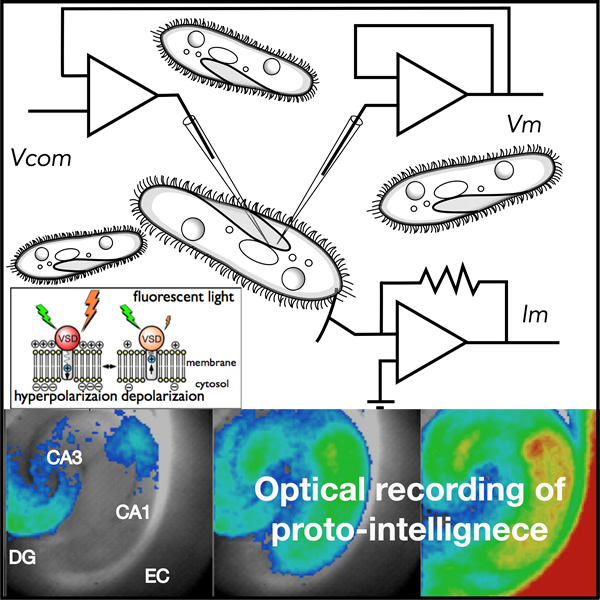Grant-in-Aid for Transformative Research Areas (A)
Publicly Offered Research:2022FY
Optical Membrane Potentials Recording in Free-Swimming Paramecium to Evaluate Proto-Intelligence with a Diorama Environment
- Principal
investigator - Tominaga, TakashiInstitute of Neuroscience and Kagawa School of Pharmaceutical Sciences, Tokushima Bunri University
Paramecium has been a model organism for animal behavior for more than 100 years. Especially since the 1970s, as a "swimming neuron" and "swimming receptor," the single-cell organism became a pivotal biomechanical cellular model. One can predict its behavior from intracellular signal transduction systems, such as membrane potential responses and calcium, or vice versa. The precise electrophysiological analysis made this possible. The precise electrophysiology was possible because of its large cell size; one could use an accurate two-electrode voltage clamp. However, the straightforward understanding of their behavior has been overturned based on a detailed behavioral analysis. The cell could have a more complicated control mechanism—a proto-intelligence. On the other hand, some brain science researchers have started to explore intelligence in lower animals.
Using membrane voltage imaging, I have been studying the brain, especially the hippocampus system. Here, I plan to apply this technique to paramecium cells under free-running conditions. I aim to elucidate intelligence (proto-intelligence) beyond the conventional understanding of the mechanistic understanding of the cells.

 Ethological dynamics in diorama environments
Ethological dynamics in diorama environments